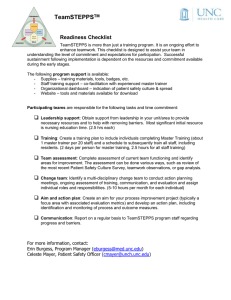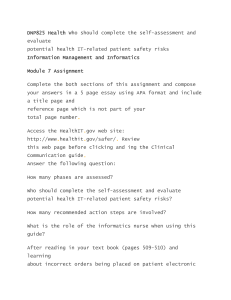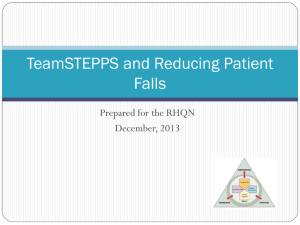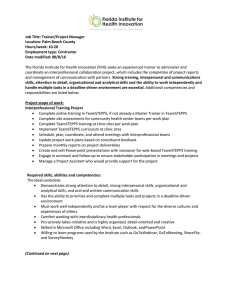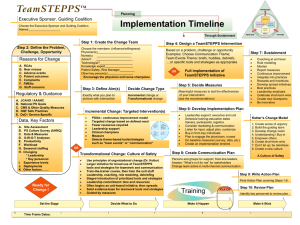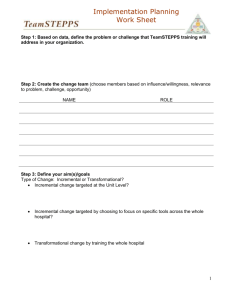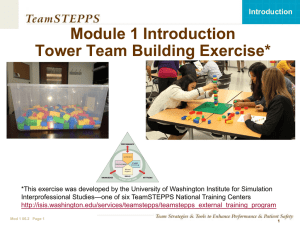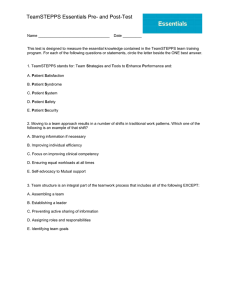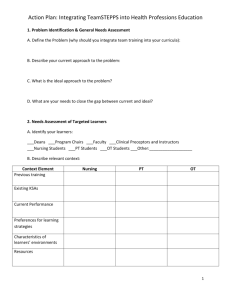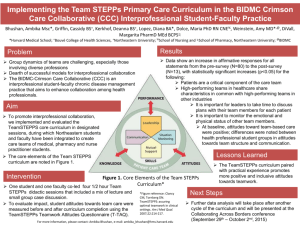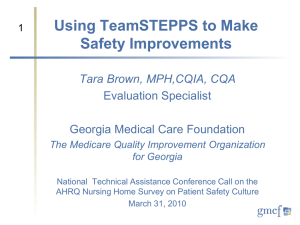Step 4: Design a TeamSTEPPS Intervention
advertisement
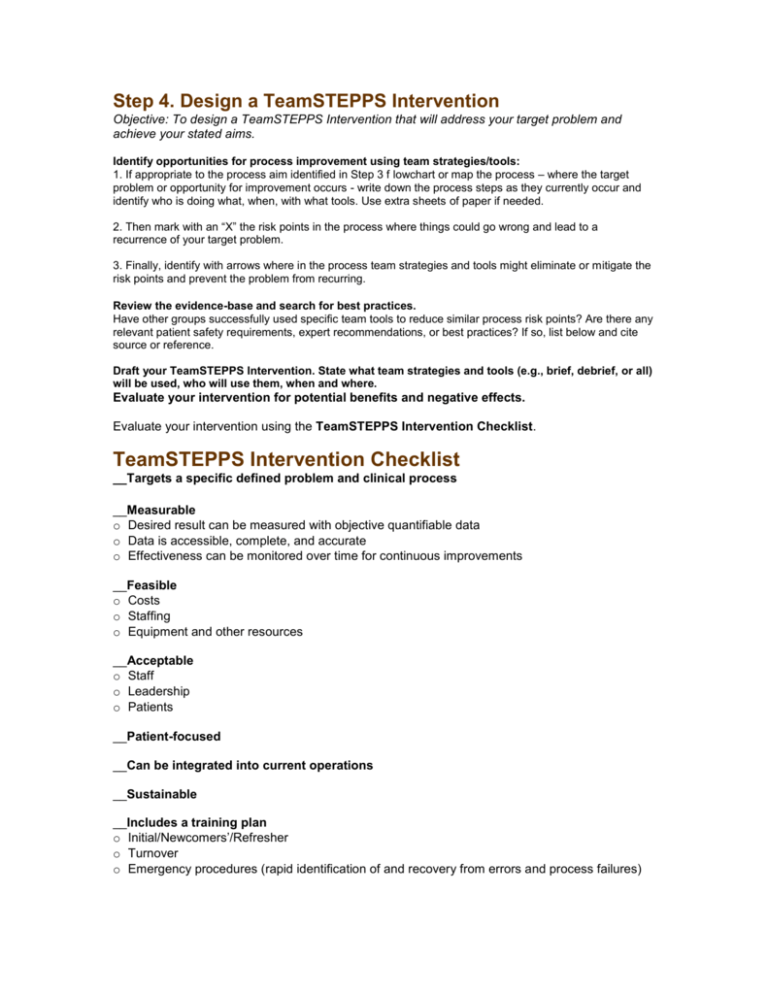
Step 4. Design a TeamSTEPPS Intervention Objective: To design a TeamSTEPPS Intervention that will address your target problem and achieve your stated aims. Identify opportunities for process improvement using team strategies/tools: 1. If appropriate to the process aim identified in Step 3 f lowchart or map the process – where the target problem or opportunity for improvement occurs - write down the process steps as they currently occur and identify who is doing what, when, with what tools. Use extra sheets of paper if needed. 2. Then mark with an “X” the risk points in the process where things could go wrong and lead to a recurrence of your target problem. 3. Finally, identify with arrows where in the process team strategies and tools might eliminate or mitigate the risk points and prevent the problem from recurring. Review the evidence-base and search for best practices. Have other groups successfully used specific team tools to reduce similar process risk points? Are there any relevant patient safety requirements, expert recommendations, or best practices? If so, list below and cite source or reference. Draft your TeamSTEPPS Intervention. State what team strategies and tools (e.g., brief, debrief, or all) will be used, who will use them, when and where. Evaluate your intervention for potential benefits and negative effects. Evaluate your intervention using the TeamSTEPPS Intervention Checklist. TeamSTEPPS Intervention Checklist __Targets a specific defined problem and clinical process __Measurable o Desired result can be measured with objective quantifiable data o Data is accessible, complete, and accurate o Effectiveness can be monitored over time for continuous improvements __Feasible o Costs o Staffing o Equipment and other resources __Acceptable o Staff o Leadership o Patients __Patient-focused __Can be integrated into current operations __Sustainable __Includes a training plan o Initial/Newcomers’/Refresher o Turnover o Emergency procedures (rapid identification of and recovery from errors and process failures) __Addresses human factors For Example: o Simplifies procedures and protocols o Standardizes equipment, procedures, protocols o Minimizes reliance on memory o Clarifies responsibilities and details task descriptions o Ensures most qualified person performs each task o Improves communication and information transfer between staff and between patients and staff o Avoids excessive workloads o Reduces handoffs
